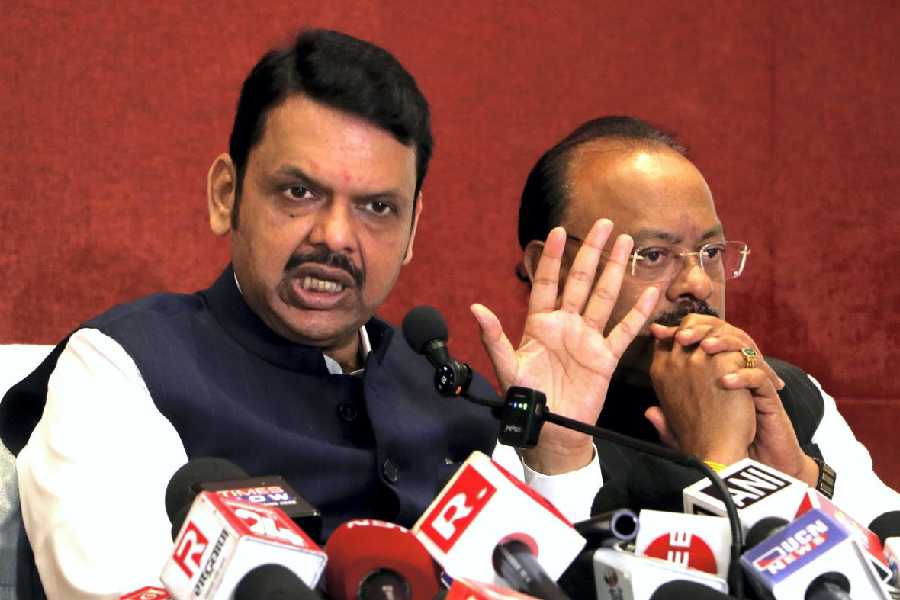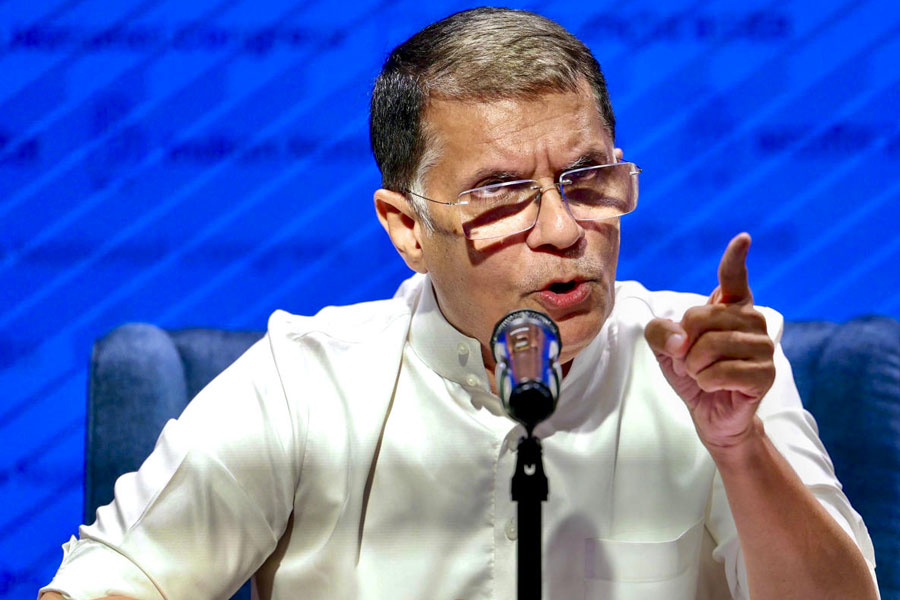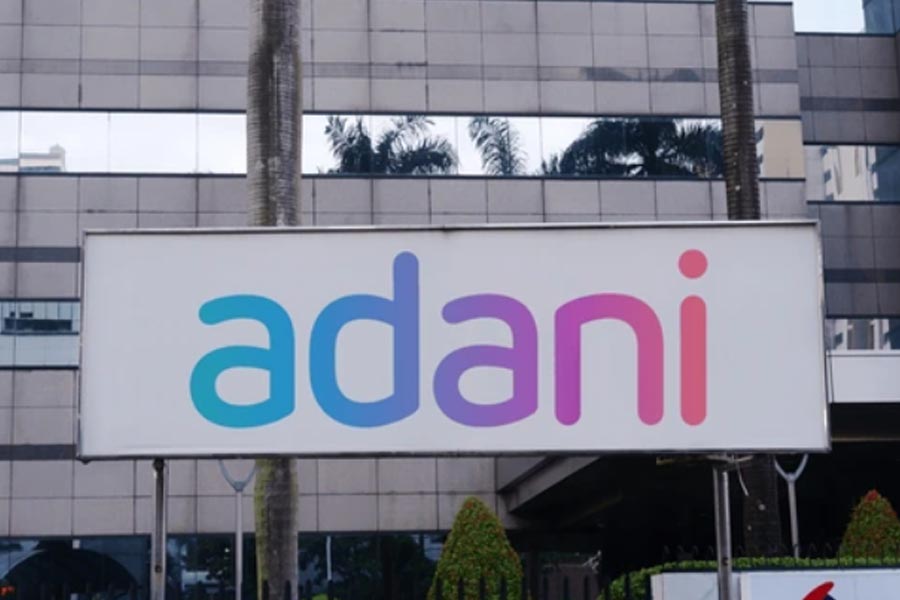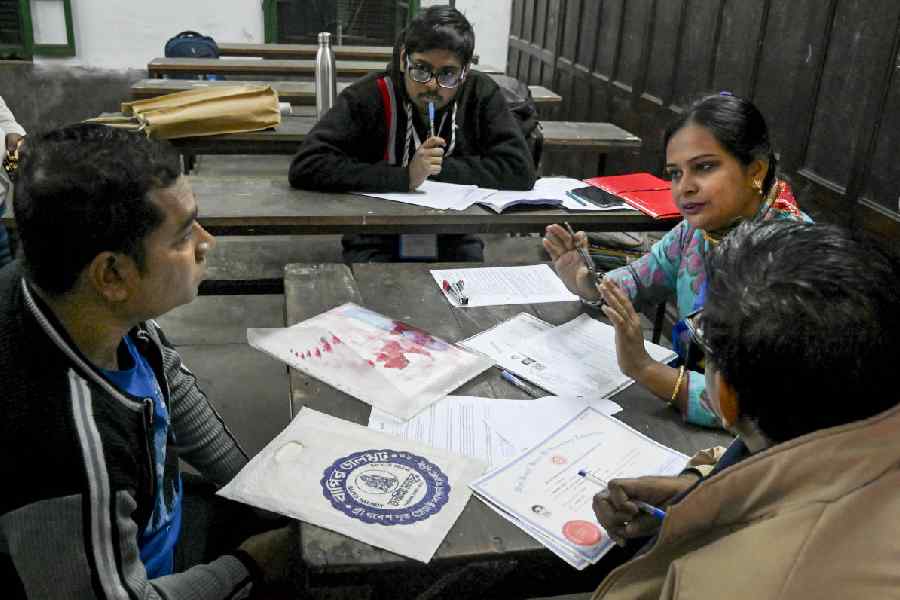Maharashtra chief minister Devendra Fadnavis on Saturday said the cost of the property damage during the Nagpur communal flare-up would be recovered from the rioters, indicating an intent to emulate his Uttar Pradesh counterpart Yogi Adityanath.
Nor would Fadnavis rule out an “Uttar Pradesh-like bulldozer action”, saying the measure would be adopted if necessary and asserting that his government would not rest till the last rioter was caught.
The Supreme Court forbade as unconstitutional both these extra-judicial methods of “punishing” people after Adityanath adopted them.
“The cost of all the damage caused during the riots will be calculated and recovered from the rioters. If they fail to pay up, their properties will be sold to recover the cost,” Fadnavis told the media in Nagpur after a review meeting with the police.
He said the police had so far identified 104 rioters and arrested 92, including 12 juveniles. Most of the violence — featuring arson, vandalism and clashes with the police — occurred in Muslim localities.
Asked whether an “Uttar Pradesh-like bulldozer action” against the rioters might also be taken, the chief minister paused for a moment to consider the question.
“Look, action in Maharashtra will be taken in our way,” he eventually said. “Wherever bulldozer action is needed, we will definitely do that. No one will be spared.”
Adityanath’s government had in the aftermath of the anti-CAA protests of 2019-20 arm-twisted many alleged rioters to pay for the property damage they purportedly caused by confiscating their land and houses and threatening to sell them.
In the years that followed, it began demolishing the properties of people accused of crimes, turning the bulldozer into a political symbol of Adityanath’s governance.
Both practices — which continued till the Supreme Court stopped them — seemed to mainly target Muslims.
Fadnavis, fresh from a landslide Assembly polls victory that was powered by a polarising campaign, is believed to be nursing national ambitions like Adityanath, who appears keen on positioning himself as the political successor to Prime Minister Narendra Modi.
An indication of this came when Maharashtra formed a committee to frame a law against “love jihad”, a term that was initially popularised by Adityanath and denotes an alleged conspiracy by Muslim men to woo and convert young Hindu women.
Speaking in the Assembly earlier this week about the Nagpur flare-up, Fadnavis had issued a stern warning in Adityanath’s style, saying the rioters would be hunted down “even in their graves”.
Nagpur had erupted on March 17 as VHP and Bajrang Dal cadres led demonstrations across Maharashtra demanding the demolition of Mughal emperor Aurangzeb’s tomb, a centrally protected monument at Khuldabad in Chhatrapati Sambhaji Nagar district.
The demands had begun after the release of the feature film Chhaava, which shows the torture and execution of Maratha king Chhatrapati Sambhaji Maharaj on Aurangzeb’s orders.
The violence broke out over rumours of an act of sacrilege during the anti-Aurangzeb protests. Fadnavis said the rumours were false and that only a replica of Aurangzeb’s grave had been burnt.
“Over 68 inflammatory social media posts linked to the riots have been flagged and deleted,” the chief minister said.
Parts of Nagpur are still under curfew. Fadnavis said the restrictions would gradually be relaxed.
The chief minister, who had earlier claimed the riots were “pre-planned”, on Saturday said there were indications of premeditation but an official confirmation would come only after the investigations were complete.
The Nagpur flare-up was at least partly the result of the ruling establishment’s support for the demand to remove or demolish Aurangzeb’s tomb.
Fadnavis had himself backed the demand but added that since an erstwhile Congress government had put the tomb under the Archaeological Survey of India’s protection, this had to be done within the framework of the law.
The RSS-BJP appears to have now realised that gunning for Aurangzeb’s tomb could lead to more communal violence, and has been trying to cool the temperature.
RSS chief publicist Sunil Ambekar recently said that Aurangzeb was “not relevant” today. On Saturday, key RSS-BJP leader Ram Madhav said in a newspaper article that Aurangzeb’s “troubling legacy doesn’t lie in his tomb”.
“But we must remember that the course of history doesn’t change merely by removing a couple of symbols here and there…” Madhav wrote.
“What is worth fighting is not the dilapidated grave but the debased legacy of Aurangzeb.”











